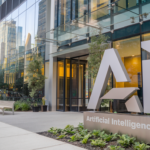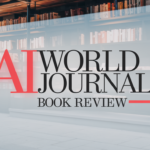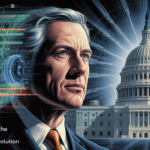On January 22, 2025, President Donald Trump signed an executive order aimed at eliminating regulatory barriers to artificial intelligence (AI) development, signaling a significant policy shift in the United States’ approach to AI innovation. Titled “Removing Barriers to American Leadership in Artificial Intelligence,” this order revokes a 2023 executive order issued by former President Joe Biden, which required developers of high-risk AI systems to submit safety test results to the U.S. government before releasing their technologies to the public.
The new directive is designed to foster rapid advancements in AI technologies, positioning the United States as a global leader in the field. By reducing oversight mechanisms, the administration hopes to create an environment where innovation can flourish without undue regulatory constraints.
A Shift in AI Policy
The 2023 executive order under the Biden administration mandated stricter oversight on AI systems that could impact national security, the economy, or public safety. It required companies to share their safety evaluations and testing data with federal agencies to ensure compliance with ethical and safety standards. While this policy aimed to address growing concerns about the risks posed by AI, such as bias, misinformation, and misuse, critics argued that it slowed the pace of innovation and hindered U.S. competitiveness in the global AI race.
President Trump’s executive order, in contrast, removes these requirements, signaling a shift toward prioritizing innovation over regulation. The order underscores the administration’s commitment to creating a more flexible and innovation-friendly landscape for AI developers.
Encouraging Innovation
Proponents of the new policy argue that reducing regulatory burdens will allow American companies to innovate more freely, accelerating the development of groundbreaking AI technologies. “The U.S. must lead the way in AI development to remain competitive on the global stage,” stated a senior White House official. “This executive order ensures that unnecessary red tape does not stifle our ability to innovate and deploy AI solutions that benefit society.”
Indeed, the United States has already established itself as a global hub for investment and innovation in AI, attracting top-tier talent, funding, and research initiatives. With its robust tech ecosystem, leading universities, and access to venture capital, the U.S. remains at the forefront of advancements that shape the future of AI.
However, the move has sparked debate among policymakers, industry experts, and advocacy groups. Critics caution that the lack of oversight could increase the risks associated with AI technologies, such as ethical lapses, safety failures, and unintended societal consequences. “While innovation is critical, we cannot afford to ignore the potential dangers of unregulated AI,” said a spokesperson from a leading AI ethics organization. “Without safeguards, we risk deploying technologies that could harm public trust and safety.”
Balancing Innovation and Responsibility
The executive order raises questions about how the U.S. can balance its leadership in AI innovation with the need for ethical responsibility. The rapid advancement of AI has brought immense potential for economic growth and societal benefits, but it has also introduced complex challenges, from algorithmic bias to cybersecurity threats.
This shift in policy also highlights the growing need for initiatives like the AI World Society (AIWS), which advocates for integrating ethical considerations, societal benefits, and long-term responsibility into AI development. AIWS provides a framework for addressing challenges in AI governance while fostering collaboration among governments, businesses, and communities to ensure AI advances serve humanity as a whole.
Moving forward, the implications of this policy shift will likely shape the trajectory of AI development in the U.S. and influence global conversations around AI governance. Whether this deregulation will result in a surge of innovation or exacerbate existing risks remains to be seen.
As the AI landscape continues to evolve, the debate over how to best regulate this transformative technology will remain a critical issue for governments, businesses, and communities worldwide. With this latest executive order, the United States is positioning itself as a leading force in the AI race—but at what cost?









